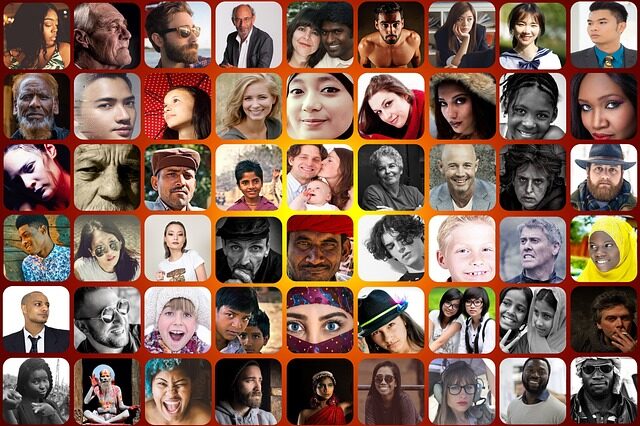
Culture Fit and Discrimination
The idea of “culture fit” is an important one. It’s originally from the world of corporate Human Resources (HR), but it’s trickled down through culture and is influential in how we build teams, whether that’s by employing people, or building a team of volunteers to run a toddler group at church.
When looked at rightly, it can be a really helpful way of building stronger teams. But all too often, it isn’t properly examined, and becomes a nice-sounding cover for discrimination.
A basic definition is that culture fit is “the likelihood that someone will fit in”, especially with the beliefs, attitudes and behaviours that are common in the organisation. An obvious example would be when I was applying for a job as a teacher, a key question was how well I’d fit into the department and get along with my prospective colleagues, and that’s important.
But the big problem with that is that it can lead to only picking people who are just the same as the ones who are already there. Writing for the BBC, Sophia Epstein cites an extreme example of one bank that only appointed lacrosse-playing men to senior positions!

As well as being clearly unjust, this also means the organisation loses out. One writer puts it like this:
A narrow focus on cultural fit can introduce bias into the hiring process and result in your company missing out on talented candidates with the experience and skills your company needs. Organizations that only hire candidates who are similar to current employees risk creating a homogeneous team that lacks the diverse perspectives and abilities continuous improvement and innovation rely on.
To combat these issues, companies have started to embrace the concept of culture add. With culture add, companies prioritize candidates that will extend and improve their culture, rather than simply fitting into it. They ask whether individuals will expand their workforce’s existing skill sets and introduce new viewpoints to make the company stronger as a whole.
Patty McCord, former Chief Talent Officer at Netflix, agrees:
We’re coming together at work to be a team, to deliver something on behalf of our customers, clients or constituents… If you go out to hire people who are just like you, it’s unlikely you’re going to solve a problem that people just like you haven’t already solved.
If we’re going to use culture fit as a criterion for employment or for joining a team, I think it’s very important to be clear what the idea of “culture fit” means, and what it should mean.

Here are three good aspects of “culture fit” to aim for.
Culture Add
Recognising ways in which the team needs to fit a wider culture, but doesn’t yet and so deliberately choosing someone who will bring extra experience or background. For example, I am currently a vicar in a socially mixed area. I am white, male, professional, educated and autistic, so I know that to be a good fit with the local culture, we need a leadership and staff team at church that includes women, neurotypical people and other ethnicities and backgrounds. Another good example would be the school I taught physics at for five years. When I started there, most of the department were coming up to retirement, and they knew there were things on the syllabus around digital technology that they had never properly studied, so they wanted someone younger who understood those things well. I fit the bill.
Values fit
Recognising specific values that the organisation holds and their ways of doing things. It means recognising and being explicit about what values the organisation holds dear – e.g. “collaborative approach to problem-solving” or “always aiming to learn more”, and then aiming to hire people based on those. It has the upsides of helping have a coherent organisational culture and allowing for culture add, without the downside of discrimination based on factors that are actually irrelevant to performance.
Vision Alignment
It really helps to be clear about what the organisation is aiming for, and to look for people who want to pull in the same direction. But again, this needn’t discriminate on the grounds of race, neurotype or culture. For example, if a school is aiming to get the best OSTED rating it can, it will be different from if it is aiming to get the best academic results or to produce young people with the best mental health, and it’s important that the senior management are agreed on their goals.

There has been a striking shift in the HR literature on questions of culture fit. For example, in 2009, the HR industry body SHRM was advising people how to screen for culture fit, but by 2022, they were producing articles with titles like “Don’t Hire for Culture Fit” and “Is Culture Fit Overrated?” The latter article concludes like this:
This also implies that a company’s apparent “misfits” could be its greatest asset. Culture is always changing, but in order to evolve, you need to bring people who bring something new to the table, and have the power to upgrade and evolve the culture of their organization. Alternatively, you will just perpetuate the status-quo and create not a rich and diverse culture, but a cult.
That’s not to say of course that workplace (or church) culture doesn’t matter. But that works best when it’s something that is grown and created, rather than hired for.
Organisational psychologist Adam Grant summarises a study examining the effects of hiring for culture fit on outcomes in Silicon Valley biotech startups.
Early on when you have a really clear mission, it’s very helpful to have a bunch of people who are bought into that. But then once you become a bigger organization, you end up too homogeneous and, and you have a lot of groupthink and it becomes harder to change and innovate.
In other words, vision alignment really matters in the early stages of an organisation or team – you need people who are pulling in the same direction. But even so, organisations that hire for culture-fit suffer in the long run, because they need the diversity to deal with challenges further down the line.
A diverse team with shared vision and values gets better results than a team where the members are all similar.
It has also become clear that a diverse team is better for everyone’s sense of wellbeing. A 2024 study by BCG Consultants found not only that those who do not feel included are far more likely to experience burnout but also that workplaces which are worse at inclusion have higher levels of burnout and attrition, and that improving inclusion in the workplace improves the mental health of those who are struggling.
In particular, they found that there needed to be representation from people from marginalised groups in senior leadership to give the impression that there is a fair and equal opportunity for success, which was one of the factors that most affected people’s sense of inclusion and wellbeing.


John Allister
John Allister is the vicar of St Jude’s Church in Nottingham, England.
He is autistic, and has degrees in Theology and Experimental & Theoretical Physics.

